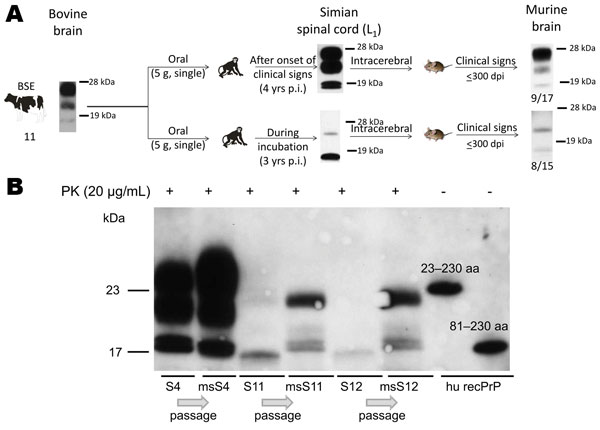Volume 19, Number 5—May 2013
Research
Foodborne Transmission of Bovine Spongiform Encephalopathy to Nonhuman Primates
Figure 7

Figure 7. . A) Summary of studies of BSE transmission to macaques and subsequent passage of lumbar spinal cord tissues (L2–L3) from a symptomatic and a preclinical macaque to BoTg110 mice. Inoculation of typical type 2B and atypical material from macaques to transgenic mice caused disease in 9 (53%) of 17 mice and in 8 (53%) of 15 mice, respectively, with no significant differences in incubation periods. B). Western immunoblots of PK-treated lumbar spinal cord samples from BSE-infected macaques (S4, S11, S12) and the corresponding bioassay results (msS4, msS11, msS12) in BoTg110 mice inoculated with simian lumbar spinal cord tissue homogenates. Analyses of the PrPres, proteinease-resistant prion protein; (PrPres) profile by Western immunoblot using mAb 6H4 showed a conserved BSE glycoform signature after the first passage when typical type 2B material collected from a macaque showing neurologic signs was inoculated into BoTg110 mice. However, the atypical PrPres pattern detected in preclinical cases was not stable after the first passage into BoTg110 mice. Recombinant PrP fragments (23–230 aa and 81–230 aa) were included to characterize molecular weights of the atypical fragments. BSE, bovine spongiform encephalopathy; p.i., postinoculation; dpi, days postinoculation; PK, proteinase K; hu recPrP, human recombinant PrP.